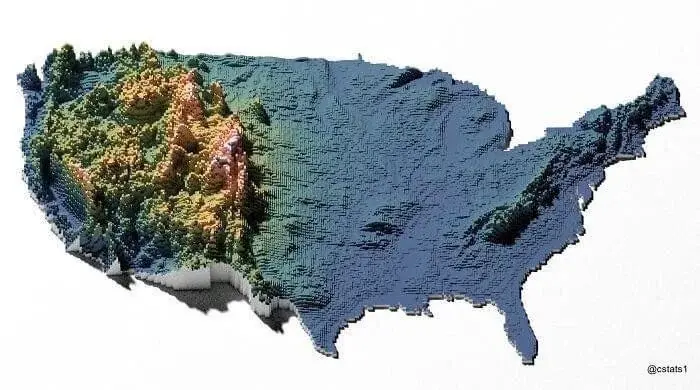When I first read the titile, I thought that the US is going to have to build A LOT to triple global production. Then it occured to me that the author means the US is pledging to make deals and agreements which enable other countries to build their own. Sometimes I think the US thinks too much of itself and that’s also very much part of American branding.
Where are my renewable bros at? Tell me this is bad.



Its wierd to have these two posts next to each other today
https://feddit.de/post/5764680
Pleges for nuclear power if photovoltaic is already cheaper?
Anyone with basic knowledge about anything knows that diversification is generally a good thing, this applies to energy as well: you don’t command the wind/sun and large scale electricity storage is to this day an unsolved problem. For all the big plans we have about a greener and carbon limited future, we need large amounts of dependable cheap and low-carbon energy, nuclear very much fits the bill (in complement to the other low-carbon energies).
Large scale electricity storage is very much a solved problem actually. Bath county for instance has solved the problem since the 80’s.
It’s just once you take the cost of storage for solar it is no longer the cheapest power source. Our power isn’t delivered by our government for the sake of sustainability and benefiting the citizens but by private corporations who want to make profit.
The pumped hydro station I linked cost 4.36 billion USD to construct in 2022 dollars back in 1985. It also has a capacity of 24,000 mWh.
Meanwhile the F-35 project cost the US government 1.7 trillion dollars.
So let’s say new pumped hydro plants of a similar size would cost 10 billion dollars just for being excessive. Then let’s say the US government didn’t fund one jet and instead built pumped hydro storage. Then fuck it, let’s say nothing worked out the budget got blown and only a fraction of that were built so only 100 stations were built to make it a nice round number.
That’s 2,400 gWh
Idk about you but that is a lot of buffer to make any renewable much more stable. It’s actually enough buffer to power the entire country for a few hours and ideally bridge most of the night demand. For more than three times over budget and for the price of one jet for the US military.
It’s also worth noting this helps all power generation not just renewables. All power plants prefer to be kept at their most efficient output and not turn off or cool off at night while demand is low. We really just need to have a buffer for when solar isn’t active but people are in the early mornings and late evenings.
Doesn’t pumped hydro storage require natural variation in elevation?
some projects use old mines for this
Yes and the bigger the difference the more potential energy you can store. Fortunately the US has lots of this naturally.
I don’t want to sound pedantic, but how exactly do you believe pumped storage work? It’s not that complicated: you have a dam, i.e. renewable hydro, and when you get excess electricity from elsewhere, some of the water downstream is pumped back upstream so the dam can do its thing once again. Essentially, developing hydro storage means developing hydroelectricity and dams, but if hydro’s contribution to the grid hasn’t increased much in a very long time, it’s not because of conspiracies, but simply because most of the available capacity has been tapped already: https://en.wikipedia.org/wiki/Hydroelectric_power_in_the_United_States
So, back to our initial problem: chemical storage (batteries) is expensive, environmentally dubious, problematic in many aspects and inefficient, chemical conversion (e.g. hydrolysis) is wasteful/inefficient, etc. So, no, we have no good answer to that.
You’re not being pedantic, you’re just misunderstanding. Pumped hydro storage is not a dam, it’s not a power source, it is a power storage system. You can use pumped hydro at dams but basically anywhere you can move weight up high and use gravity to recoup that is a form of storage. It is one of the most efficient ways to store electrical energy with electric pumps and turbines. The point of a dam has been to collect water that is deposited there via rain and use that to create power.
80% of this is just flat wrong. Chemical storage are not expensive at scale, enviromentally safe, not really problematic, and so outrageously efficient basically nothing comes close. Hydrolysis is more of a chemical reaction in organics and creating green hydrogen is done through electrolysis. It’s not wasteful or inefficient IF all of the power was surplus you had to get rid of because solar does that a lot. By your own statement solar panels are wasteful and inefficient because they only have efficiencies of what 22%?
In technical terms, could you lay out what’s the difference? You’ve got a water retention system that empties into a generator and a capability to pump some of the water back upstream. What larger storages and generators do we have besides dams? None, and there’s no topographic feature that could be at an advantage there. Because the problem at hand is one of scale: https://ourworldindata.org/grapher/electricity-prod-source-stacked?country=~USA
Assuming that energy demand remains the same (instead of increasing, which we know will be the case with more electrification), and that, to keep targetting those 4000TWh produced, we replace coal and gas by wind and solar. That would mean having to store what amounts to 2000TWh of production (under an extremely optimistic assumption of 80% storage capacity for the replaced energy only). That would mean that, just to buffer out what solar+wind require in storage, we would have to surpass what current hydro produces, 8 times over.
I know this isn’t accurate (storage ≠ production, grid can be balanced out geographically, etc), but we are one order of magnitude in trouble already.
There is no upstream, you’re thinking it’s a dam but you don’t dam up a stream. You have two containers at different elevations to store potential energy.
You’re conflating a lot of things in this second paragraph. The world can generate enough solar for the entire planet off an area the size of new mexico. LA can power itself off just covering parking lots toe power itself. Then there’s nuclear, wind, tidal… All of these need a buffer because they struggle with either inconsistent production or inconsistent demand. Pumped hydro’s only purpose is to be that buffer. When you’re making lots of electricity you move mass up and when you’re needing more than you can produce you move mass down.
The US can power itself for the next 100 year off waste nuclear weapons alone… but nuclear wants to sit at a flat load. Because of this, you’d need brownouts to shed demand. Pumped hydro means you can run more nuclear and generate more electricity than the grid needs at night or whatever and pump water up a tube to another container.
Basically, the reason we use natural gas to generate power is because it is cheaper than anything and can be stopped/started with much less fuss. LNG tanks are pretty cheap, it comes from the ground at a determined rate… it’s super convenient.
But a LiFePo battery system with inverters and solar is enough to power households if done efficiently for less than $50,000. The price gets lower every year and eventually people will be able to opt out of the grid entirely.
I mean, you don’t answer the billion dollar question here. Let’s not call it a dam, but a container, and let’s not mention the need to pump anything. The amount of (potential) energy you can store is a function of the volume of the above container, isn’t it? Then, could you estimate the amount of water this container would need to be able to retain in a scenario where the grid relies primarily on intermittent energy sources? And can you propose an engineering solution to contain this much amount of water?
The intuition here is that you are re-inventing dams, without the room to build more.
I don’t agree nor disagree with the rest of what you say, I just can’t get beyond the “energy storage is a solved problem” point yet.
No. The potential energy is determined by elevation difference and mass.
That depends on each individual site of pumped hydro. Obviously a site with a 1000m drop will need less water in containment but enough to fill the pipes.
Yes
It’s not a reinvented dam because dams can only be built where there is a gorge and a drop. For instance you can’t really dam the Mississippi. You also can’t dam mostly every mountain but you can build a container on a mountain and fill it with any mass.
It’s hard to agree or disagree on anything if you think potential energy is a dam. Is a truck with water in it just a dam that turns water mass into thermal energy with it’s brakes to you?
it seems like the development of a diverse portfolio is in the works
I’m admittedly, just an internet stranger with no formal training in interpreting media or the global energy market